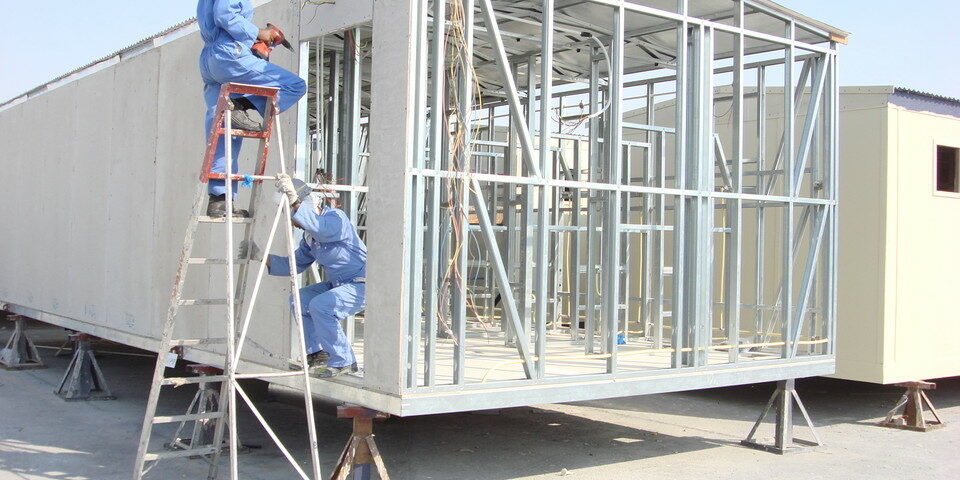
THE BEST GUIDES OF FLAT PACK CONTAINER HOUSE
April 17, 2023Building a house with flat pack containers has 8 advantages
May 12, 2023The construction industry uses lightweight steel structures in a variety of different ways. As a result, they are highly efficient, safe, and cost-effective. Assembling and disassembling them is also easy. Aside from that, they are suitable for various building types, from low-rise housing to multi-story mixed-use buildings.
Structures made of light steel are manufactured quickly. The reason for this is that they are constructed from pre-engineered steel components. It is possible to ship these components to the construction site and have them ready for installation. Project managers can then focus on other tasks. On-site cutting and measuring of steel is also eliminated with prefabricated materials.
Strong elements and heavy point loads can also be supported by lightweight steel construction. All kinds of disasters cannot cause them to burn because they are made of non-combustible materials. An earthquake, for example, won’t cause them to collapse. They are also non-rotting, non-shrinking, and non-rusting. Additionally, they are resistant to termites. Furthermore, they are energy efficient and offer good acoustics.
The strength-to-weight ratio of lightweight steel construction is excellent. Consequently, the building will be capable of supporting heavy point loads without compromising its structural integrity. Additionally, they can span up to 6 meters. As a result, they can eliminate the need for internal load-bearing walls. As well as being flexible in interior space planning, they can bend with force.
Assembling and disassembling the light steel structure is also easy. Bolts and nuts are commonly used to assemble these parts. Additionally, they are resistant to termites, earthquakes, and rain. Recyclable and reusable, they can also be used again. A construction schedule can also be more flexible thanks to the structure’s disassembly at any time.
Structures made of lightweight steel are also useful for constructing industrial buildings in a short amount of time. Small and medium industrial plants, warehouses, and factories with overhead cranes can all be built with these materials.
Using lightweight steel structures also has the benefit of being fire resistant. Furthermore, they are fireproof and won’t break down. As a result, sound can easily travel through them more easily than through solid masonry structures. A building’s carbon footprint is also reduced by reducing carbon in its structure. Furthermore, the steel structure is flexible, allowing the building layout to be adjusted according to the building’s needs.
There are many reasons to be proud of light steel houses. It insulates better than brick-and-mortar buildings and can withstand typhoons like no other. As a matter of fact, it is capable of surviving an earthquake of magnitude 9. Light steel structure villas are not only resilient to past typhoons, but also capable of surviving future typhoons. Due to its high concentration of thermal insulation, it is an effective barrier against typhoons due to its high thermal insulation properties.
Light steel villas are best chosen if they suit your specific needs, of course. Light steel villas are an excellent choice for difficult terrain and inaccessible transportation areas. Due to its ability to insulate heat, it is also well suited to areas with extreme weather conditions. In addition, its cold-proof certification makes it a strong contender in disaster recovery scenarios.

